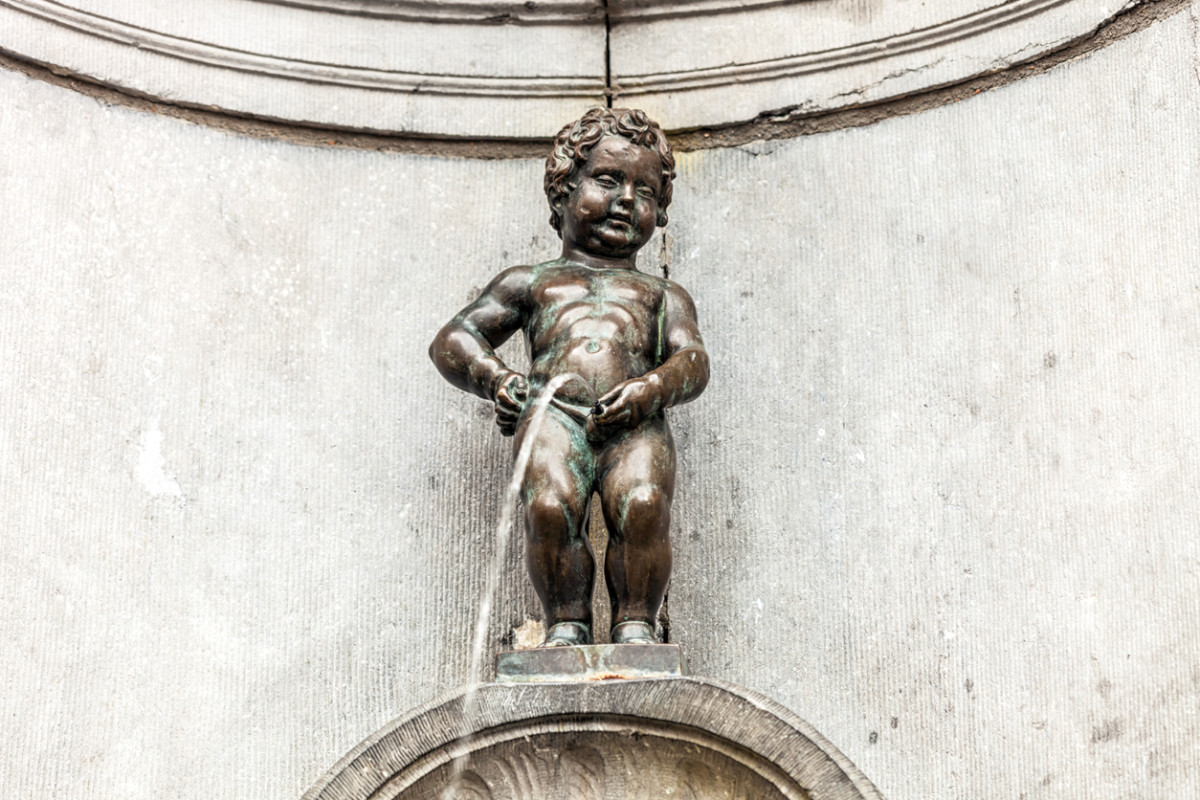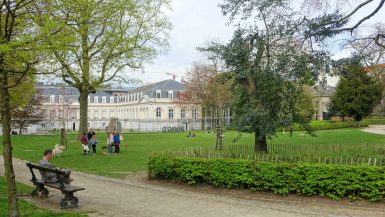Manneken Pis is a fountain under the form of a bronze statue of 55,5 centimeter (1.82 ft) high. The statue represents a little man pissing. It is located in the earth of Brussels, near the Grand Place, which is the Brussels main square. This landmark is the symbol of Brussels.
Location
The Manneken Pis is located in the center of Brussels at the junction of the Rue du Chêne / Eikstraat and the Rue de l’Étuve / Stoofstraat. This junction is only 5 minutes walk from the Grand Place.
What does Manneken Pis meaning in English?
Manneken Pis is meaning the little pissing man in the dialect of Brussels.
Why was Manneken Pis created and what is its history?
The fountain had a very important role in the distribution of drinking water. The first reference to the statue is in an administrative paper about the water that feed the different fountains of Brussels and dated from 1451 or 1452.
Some 19th century historians thought that the first reference to the statue was from a text of the 14th century, but it is in reality referring to another fountain, the fountain of the Little Julien or Juliaenkensborre (petit Julien in French and Julianske in Dutch). The two fountains are in reality distinct fountains. But it explains why the Manneken Pis is also called the Little Julien.
The first statue is only visible in an old painting of Denis Van Alsloot that represent the Brussels Ommegang from 1615. Indeed, a new bronze statue replaced the first one in 1620 by a well known Brusselian Sculptor, Jerôme Duquesnoy the Elder (1570 – 1641).
Until 1926, the water of the fountain came from a natural source.
How many times has the Manneken Pis been stolen?
The statue was several times stolen. The first attempt happened in 1747 by a group of French soldiers.
Then in 1817, the fugitive Antoine Licas stole the statue. The statue was found, but in 11 fragments. A welder made the restoration under the supervision of the sculptor Gilles-Lambert Godcharle. And the inscription 1620 – REST 1817 was written on the base of the Manneken Pis.
The third time was in the night of 16 to 17 January 1963 by students and the statue was quickly found.
Finally in 1965, a thief stole again the statue. The base with the feet and part of the legs was remaining. The rest of the body was found in 1966 and the statue was restored again. The original statue was not more set in its place, but rather in the Museum of the city of Brussels and a copy is nowadays visible on the fountain.
On 26 April 1978, students stole also the copy. It was the last time that it was stolen.
Costumes
The wardrobe of Manneken Pis count more than 1000 costumes. The tradition seems to go back to the Ommegang of 1615. The oldest costume of the actual wardrobe is the one offered by the King of France Louis XV in 1747. In 1756, the wardrobe was only counting 5 costumes. It is only after 1945 that the number of costumes has exceptionally increased. The wardrobe is located in the Museum of the city of Brussels, located in the Maison du Roi (French for King’s House) or Broodhuis (Dutch for Bread house) on the Grand Place. Since 2017, the 19 rue du Chêne / Eikstraat became a museum entirely dedicated to the most emblematic costumes of the Manneken Pis. More information and tickets can be bought on the website of the museum: www.mannekenpis.brussels.
Manneken Pis statue for sale
If you want to bring back to your home a little Manneken Pis, you will find a lot of souvenir shops around the fountain that sell copies of it in different height.
The girl equivalent of the Manneken Pis
Few know about this, but since 1985 the Manneken Pis has a girl counterpart. Jeanneke Pis is located not far from the Manneken Pis in the Impasse de la Fidélité/Getrouwheidsgang.
Since 1998, there is also a peeing dog called Zinneke Pis. This statue is also located in the center of Brussels at the junction of the Rue des Chartreux / Kartuizersstraat and the Rue du Vieux Marché aux Grains / Oude Graanmarkt.





